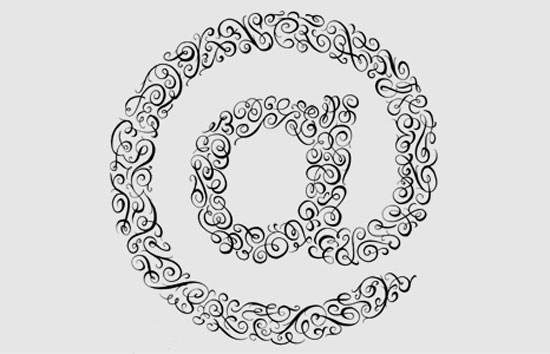Once a rarely used key, even nearly abandoned, the charming character @ has become an indispensable symbol of modern electronic communication.
According to Smithsonianmag.com , Italians call the character @ a "snail" , while the Dutch call it " monkey tail" . Whether it is " snail" or "monkey tail " then @ is an indispensable character in electronic communication. @ has even been included in the eternal collection of the Museum of Modern Art (USA), with a commentary on @ embodying the "elegance, economy, wisdom and meaning of samadhi." future direction imbued in the art of the times ".

The origin of this symbol, one of the most charming characters on the keyboard, is something full of mystery. One theory is that medieval monks searched for acronyms while copying manuscripts, converted the Latin word "forward " to "a" along with the latter part of the " d" as a tail. .
Another theory says, @ comes from the French word "at" and the writer, while trying to write quickly has round the pen up and to the side. It is also possible that this symbol evolved from the abbreviation "each at" - the word "a" is encased in "e ". The character @ used for the first time in the document was in 1536, in a letter from Francesco Lapi, a Florentine trader, used @ to denote the unit of the so-called masticated wine, sold in large clay pail.
Since then, this symbol began to have a historical role in trade. However, this period is not yet golden with @. The first typewriter, built around the mid-1800s, without the @ key. Likewise, @ is not in the symbol range of the first punched tabulation system - this system is considered a precursor to computer programming.
The dark fate of the @ symbol ended in 1971, when a computer scientist named Ray Tomlinson faced a dilemma: How to connect computer programmers together. At that time, each programmer connected to a special main machine via telephone and typewriter telegraph. But these computers were not connected, a shortcoming that the US government had to find a way to overcome, and the US government hired BBN Technologies, the company that Ray Tomlinson was working to develop the network. Grid called Arpanet - Ancestor of the Internet.
Ray Tomlinson's challenge is to process a person's message and send it through Arpanet to someone at another computer. This address needs the programmer's name as well as the name of the computer. And the icon to separate these two address elements has not been widely used in programs and operating systems, making the computer not understand.
During the study, Tomlinson's eyes suddenly caught @, right above the "P " on his Model 33 telegraph. "I am looking for a symbol that is not used much," Tomlinson said, "and there are not many options. - Because icons like dots or commas are used a lot." Tomlinson chose @, and sent himself an email. This email went from a telegraph in the room, via the Arpanet network, to another telegraph also in the room.
Tomlinson, who still works at BBN, says he doesn't remember what he wrote in the first email. But with that email, the character @ that had almost been abandoned became an extremely important symbol of the media revolution of mankind.
 'Fine laughs' - Scary and painful torture in ancient times
'Fine laughs' - Scary and painful torture in ancient times The sequence of numbers 142857 of the Egyptian pyramids is known as the strangest number in the world - Why?
The sequence of numbers 142857 of the Egyptian pyramids is known as the strangest number in the world - Why? History of the iron
History of the iron What is alum?
What is alum?